Improving shrimp survival will be difficult
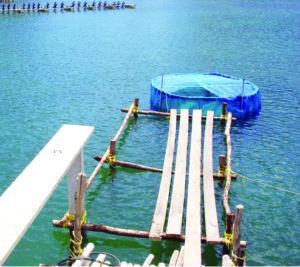
In collaboration with Oceanic Institute of Hawaii, USA, the vertically integrated shrimp producer Taksin Marine began conducting field evaluations in 2008 to assess the grow-out performance of selectively bred Pacific white shrimp (Litopenaeus vannamei) under commercial conditions in southern Thailand. Data collected by Oceanic Institute researchers from these evaluations have yielded valuable information about genetic parameters relevant to the operation of an effective family-based, selective-breeding program.
Family production, evaluation
Two selected lines (Lines 1 and 2) and one domesticated, unselected line (Control Line) were produced at Oceanic Institute. For each selected line, one cohort of 14 families was produced each year. Representative shrimp weighing about 1.5 grams from each selected family and the Control Line were tagged for family/line identification and sent to the Taksin Marine farms for evaluation. To date, four field evaluations (F.E.) have been completed. Families from Line 1 were evaluated in FE1 and FE3 and families from Line 2 were evaluated in FE2 and FE4.
All shrimp used in the evaluations were stocked in round, 4.3-square-meter cages. One cage was installed per pond. Three cages were used in FE1, and four cages were used in FE2, FE3 and FE4.
About 450 tagged shrimp consisting of 30 shrimp/family and 30 control shrimp were stocked into each cage. Stocking density and feed management protocols were similar to those typically used at the Taksin Marine farms. Cages were harvested after 60 to 100 days, depending on growth and pond harvest schedules. At harvest, all surviving shrimp were identified by family and weighed individually.
Concurrent growout evaluations of siblings from selected families and the Control Line were conducted at Oceanic Institute in an indoor, recirculating raceway. Stocking densities, duration of grow-out and mean harvest weights for the evaluations ranged 295-410 shrimp per square meter, 69 to 95 days and 19.3 to 23.6 grams, respectively.
Genetic gain
Average daily growth for selected families in FE1 and FE2 was 0.214 and 0.212 grams, respectively (Table 1). After one generation of selection, daily growth increased to 0.244 grams in FE3 and FE4. Importantly, growth of selected lines improved relative to the Control Line, with gains of 4.7 and 4.1 percent observed for Lines 1 and 2, respectively. An increase in estimated mean breeding values for each line showed similar genetic gains. Genetic gains for survival were not observed in these evaluations, as survival of the selected families and Control Line shrimp were similar in each field evaluation.
Moss, Mean family harvest weight and average daily growth, Table 1
| Selected Line Harvest Weight (g) | Selected Line Average Daily Growth (g) | Control Line Harvest Weight (g) | Control Line Average Daily Growth (g) | Control Line Difference In Growth (%) |
|---|
Selected Line Harvest Weight (g) | Selected Line Average Daily Growth (g) | Control Line Harvest Weight (g) | Control Line Average Daily Growth (g) | Control Line Difference In Growth (%) | |
|---|---|---|---|---|---|
| Line 1 | |||||
| FE2 | 22.3 | 0.214 | 17.4 | 0.163 | 30.7 |
| FE4 | 16.4 | 0.244 | 12.2 | 0.180 | 35.4 (+ 4.7*) |
| Line 2 | |||||
| FE1 | 17.9 | 0.212 | 11.7 | 0.152 | 39.6 |
| FE3 | 20.2 | 0.244 | 14.5 | 0.170 | 43.7 (+ 4.1*) |
Correlations
Phenotypic correlations of family means for growth among cages within the field evaluations were highly positive (Table 2). In contrast, correlations for survival among cages typically fluctuated around zero with the exception of FE1. This was somewhat surprising, given that for each evaluation, cages were installed in ponds adjacent to or in close proximity to one another and stocked on the same day. The lack of significant positive correlations for survival among cages indicated that survival is an unstable trait and may be difficult to improve by selection.
Moss, Summary of phenotypic and genetic correlations, Table 2
| Correlations | Growth | Survival | Growth/Survival |
|---|
Correlations | Growth | Survival | Growth/Survival |
|---|---|---|---|
| Cage/Cage | |||
| FE1 | 0.81-0.82 | 0.70-0.85 | – |
| FE2 | 0.85-0.92 | 0.04-0.25 | – |
| FE3 | 0.78-0.95 | -0.36-0.28 | – |
| FE4 | 0.84-0.88 | -0.44-0.26 | |
| Trait/Trait at Taksin Marine | |||
| FE1 | – | – | 0.07 (0.12) |
| FE2 | – | – | 0.35 (0.40) |
| FE3 | – | – | 0.28 (0.30) |
| FE4 | – | – | 0.25 (-0.40) |
In this study, growth and survival were poorly correlated with phenotypic and genetic correlations for individual field evaluations, ranging from 0.07 to 0.35 and -0.40 to 0.40, respectively. Likewise, the overall genetic correlation for all evaluations was essentially zero.
Phenotypic and genetic correlations for growth between shrimp families evaluated at Oceanic Institute and Taksin Marine were positive and typically moderate to high (0.08 to 0.81 and 0.32 to 0.70, respectively). These results indicated that selection for growth in one environment likely will result in positive gains in other environments, even when the environments are drastically different, as was the case in this study. Not surprisingly, phenotypic and genetic correlations for survival were low. However, all correlations were positive.
Implications for breeding programs
Results from these field evaluations indicated that shrimp growth can be improved after one generation of selection, even with a modest investment in selective breeding. However, improving shrimp survival likely will be more difficult.
Survival appears to be an unstable trait, even within an individual evaluation. This is problematic for breeding programs because measured survivals from field evaluations are likely not representative of general farm, area or regional survival. Furthermore, selection for growth will have little effect on survival, as these two traits appear to be poorly correlated.
There are concerns that selective-breeding programs that rear shrimp in benign environments such as specific pathogen-free breeding centers can promote traits that are maladaptive under commercial grow-out conditions. However, results from the field evaluations reported here did not support those concerns.
Moderate to high correlations for growth at Taksin Marine and Oceanic Institute suggested that selection for growth in one environment likely will result in positive gains in other environments. Thus, selection for growth at a genetic nucleus should improve growth performance at farm sites, although selection data from farm trials will be more useful if selection efforts are targeted for a specific location.
(Editor’s Note: This article was originally published in the September/October 2010 print edition of the Global Aquaculture Advocate.)
Now that you've reached the end of the article ...
… please consider supporting GSA’s mission to advance responsible seafood practices through education, advocacy and third-party assurances. The Advocate aims to document the evolution of responsible seafood practices and share the expansive knowledge of our vast network of contributors.
By becoming a Global Seafood Alliance member, you’re ensuring that all of the pre-competitive work we do through member benefits, resources and events can continue. Individual membership costs just $50 a year.
Not a GSA member? Join us.
Authors
-
Dustin R. Moss
Oceanic Institute
41-202 Kalanianaole Highway.
Waimanalo, Hawaii 96795 USA -
Steve M. Arce
Oceanic Institute
41-202 Kalanianaole Highway.
Waimanalo, Hawaii 96795 USA -
Clete A. Otoshi
Oceanic Institute
41-202 Kalanianaole Highway.
Waimanalo, Hawaii 96795 USA -
Shaun M. Moss, Ph.D.
Oceanic Institute
41-202 Kalanianaole Highway.
Waimanalo, Hawaii 96795 USA -
Taksin Chuenchom
Taksin Marine Hatchery
Amphure Takuatung,
Phang-Nga, Thailand -
Ekachai Sonchai
Taksin Marine Hatchery
Amphure Takuatung,
Phang-Nga, Thailand
Tagged With
Related Posts
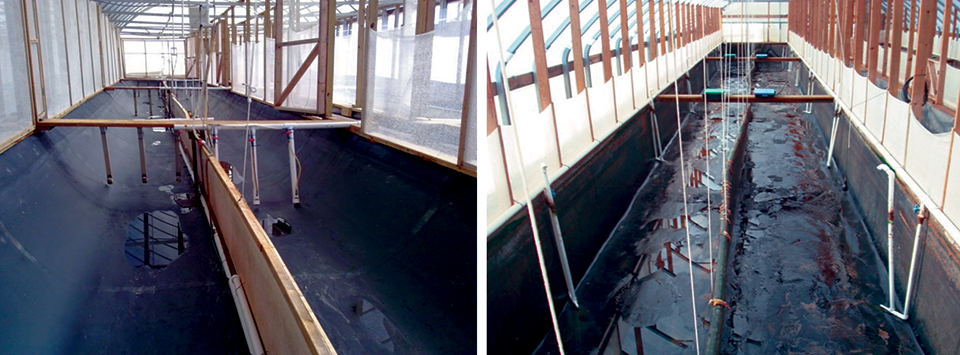
Responsibility
Advances in super-intensive, zero-exchange shrimp raceways
Research at the Texas AgriLife Research Mariculture Laboratory is investigating ways to improve the economic viability of super-intensive raceways for shrimp production.
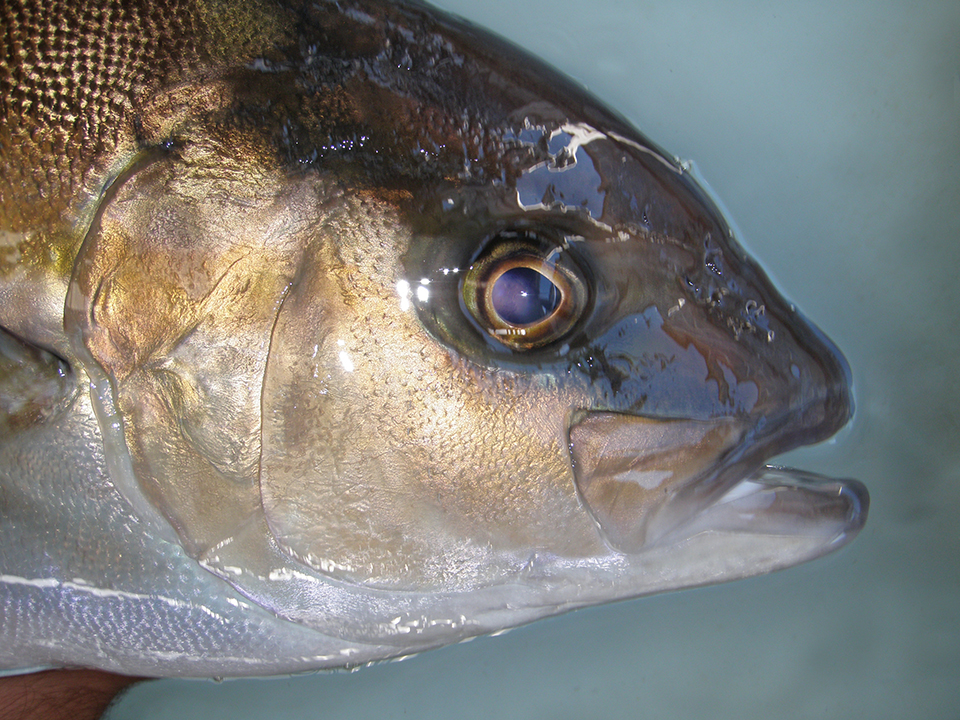
Health & Welfare
Advances in yellowtail larval rearing
The University of the Canary Islands in Spain is researching yellowtail broodstock management and larval rearing to promote aquaculture diversification in Europe.
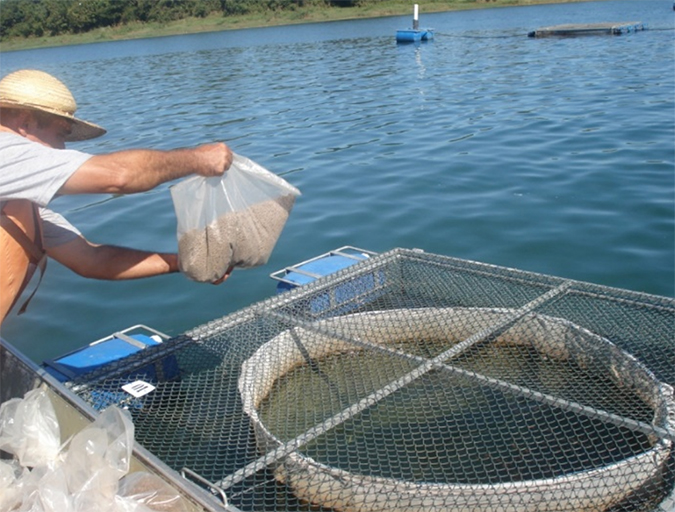
Health & Welfare
Aiding gut health with a natural growth promotor
A study with Nile tilapia conducted in commercial production cages in Brazil showed the potential – in the absence of major disease threats – of a commercial, natural growth promotor that modulates the microbiota (inhibiting growth of pathogenic bacteria and promoting growth of beneficial bacteria) and inhibits quorum sensing.
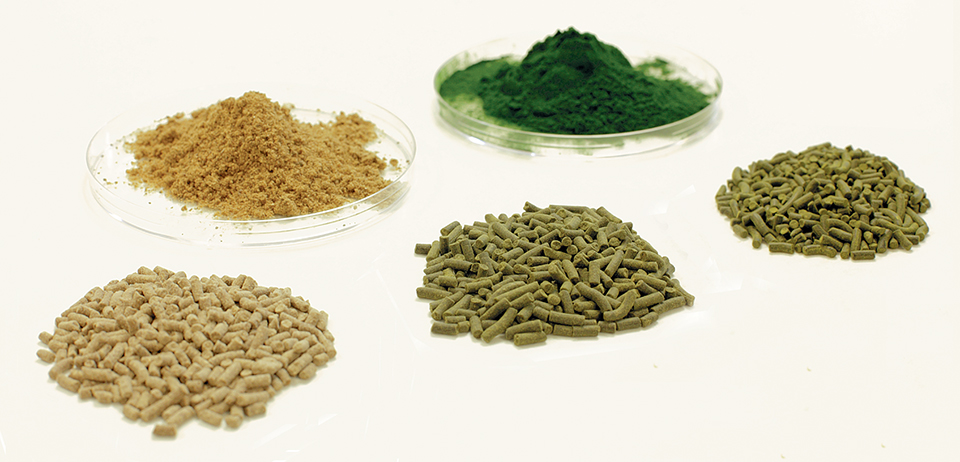
Aquafeeds
Algae alternative: Chlorella studied as protein source in tilapia feeds
Chlorella and other species have potential as protein sources in aquafeeds. In trials with tilapia fry raised in a recirculating system, the fish received a fishmeal-based control diet or feeds with portions of the fishmeal replaced by Chlorella.


